Contact: +91 99725 24322 |
Menu
Menu
Quick summary: Discover how Alternate Wetting and Drying (AWD) rice cultivation promotes climate resilience by conserving water, reducing methane emissions, and supporting sustainable farming practices for the future.
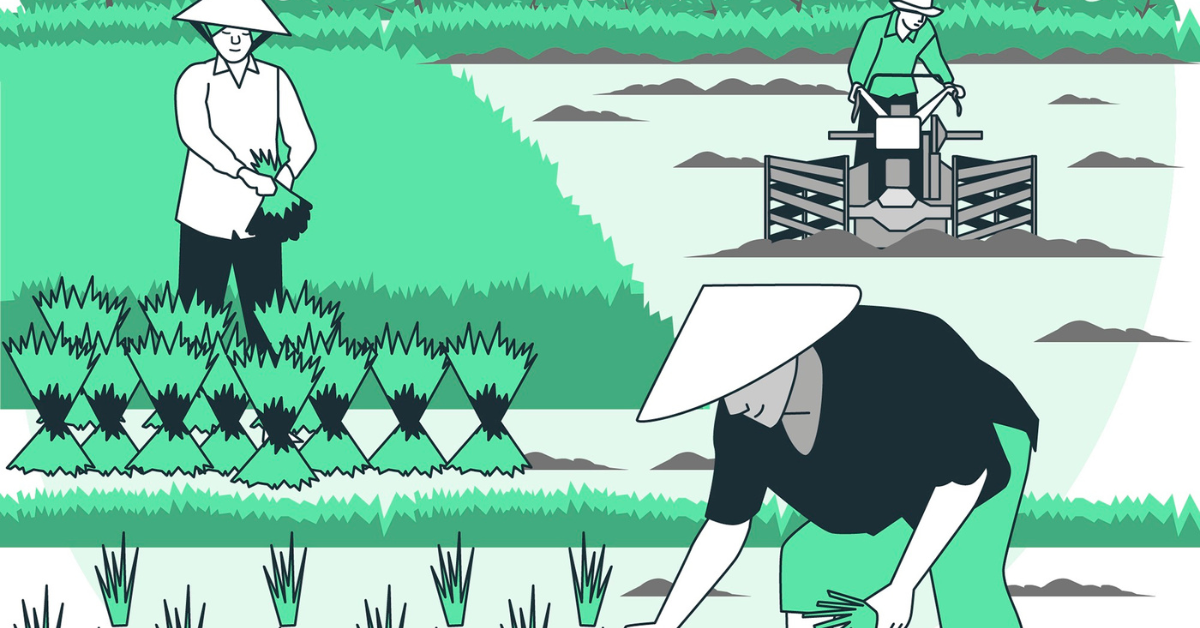
As climate change continues to impact agricultural systems worldwide, rice farmers face mounting challenges, from water scarcity to unpredictable weather patterns. Traditional rice cultivation methods often demand intensive water use, which further strains dwindling water resources and exacerbates environmental concerns. But what if there was a way to grow rice more efficiently while reducing water consumption and mitigating climate impacts? AWD Rice cultivation practice not only conserves water but also empowers farmers to build climate resilience.
By optimizing water usage and lowering greenhouse gas emissions, AWD ( Alternate Wet and Drying) offers a promising solution to sustainably meet the world’s growing rice demand while protecting vital resources.
Key Takeaways
The vast majority of rice is grown in Asia with a one-fifth to a quarter of it in Southeast Asia, with Indonesia, Thailand and Vietnam being the top producers in the region. Rice cultivation is a major source of livelihood grown on more than 144 million farms. The global rice market value was valued at USD 287.45 billion in 2021 and is projected to grow at a CAGR of 2.2% from 2022 to 2028. Asia Pacific is the largest consumer of rice which has led to its significant growth.
75% of rice is cultivated in irrigated lowlands and needs lots of water for its growth. The increasing population and globalization has resulted in water scarcity everywhere. The underground water resources and the surface water is getting depleted, disrupting rice production. The traditional rice cultivation that takes place in flooded soils demands a lot of water compared to other cereal crops. The farmers use a lot of water for land preparation and the growing of crops. The traditional method accounts for 50-80% of water usage. Surface run-off, seepage and percolation accounts for the percentage of water input.
Rice is one of the world’s dominant staple food for more than 3.5 billion people and is critically important for global food security. But, do you know that rice cultivation is water-intensive and is dependent on heavy rainfall and a significant source for methane emissions accounting for 9-11 % of GHG emissions in agriculture.
Given the shortage of water for irrigation of crops and environmental concern, there is a need for addressing these issues through technology. Alternate Wetting and Drying Irrigation practice in Rice (AWD) is a water management practice that reduces water use and limits the GHG emissions in irrigated rice fields.
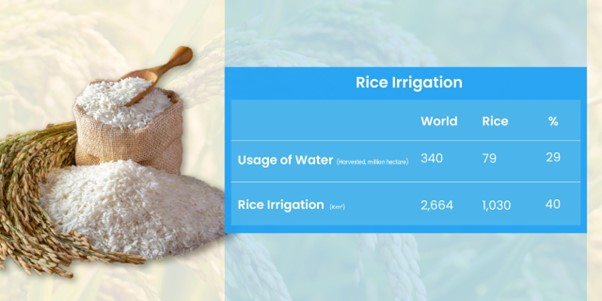
With about 50% of fresh water being used for irrigation and with the need to increase rice production by 70 % by 2030 to feed the growing population, farmers need to adopt new technologies to address sustainability in rice cultivation. Furthermore, the integration of rice traceability ensures that consumers and businesses can verify the sustainability of the rice they purchase, promoting transparency and accountability across the entire supply chain.
AWD developed by IRRI is a water smart and climate smart technique in rice production. It is a water saving and methane mitigation technology that rice farmers can use to reduce their water consumption during the irrigation of rice. It is based on the principle of flooding and non-flooding of fields alternately during the rice growing period. The number of days of drying the soil in AWD can vary according to the type of soil and cultivar from 1 to 10 days. The frequency of irrigation and duration of non-flooding can be determined by re-irrigation as a threshold of soil water potential is reached and the water table level drops to a certain level. Direct Seeded Rice (DSR) and Alternate Wetting and Drying (AWD) are both sustainable agricultural practices that can work in tandem to enhance the sustainability of rice cultivation.
AWD is also called controlled irrigation. The practical way of implementing this is by monitoring the depth of water table in the field using a simple perforated field water tube. When the water level is 15cm below the surface of the soil, it is time to flood the soil to a depth of around 5cm at the time of flowering, from 1 week before to 1 week after the maximum flowering. The water in the rice field needs to be kept at 5cm depth to avoid any water stress that could result in loss of crop yields. The threshold of water level at 15cm is called ‘safe AWD’ which will not result in loss of rice yield, as the roots will be able to take the water from the saturated soil. The field water tube helps to measure the water level in the field and thereby monitor the water stress.
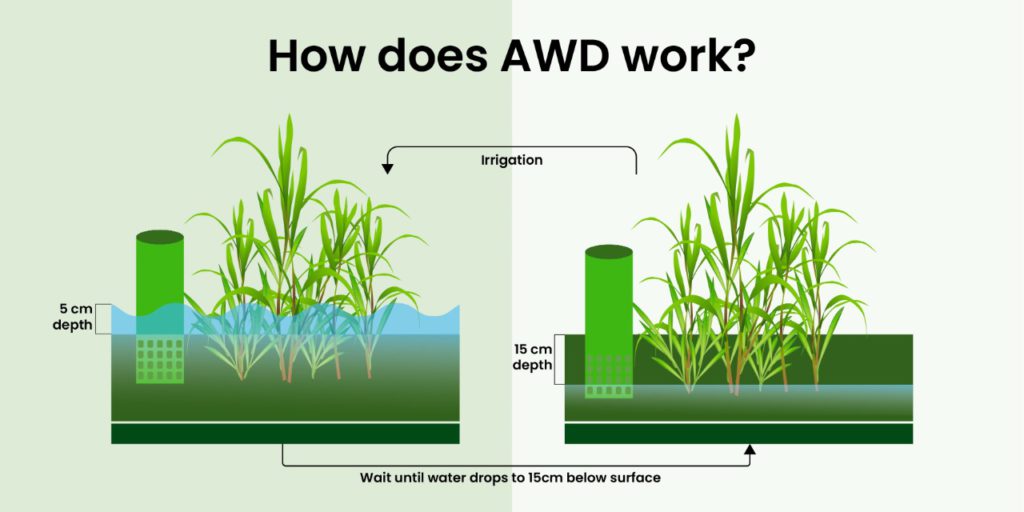
A field water tube can be made up of 30cm long PVC pipe, having 15cm diameter so that water table is visible. The field water tube can be perforated on all sides by drilling holes of 5mm diameter spaced 2cm apart. The perforated side is buried in the soil so that 10cm protrudes outside the soil surface. The field water tube is located in such a manner that water level can be monitored easily.
The farmers often dispense with these tubes once they get an idea of water levels. There is also a requirement for proper levelling of rice fields to avoid excessive dry or wet areas that can lead to reduced crop yields. Weed control is also important as no standing water promotes weed growth.
AWD can be practiced in areas where there is reliable water supply to reflood once the area is dried out and maintain the safe AWD levels. AWD cannot be practised in heavy rainfall areas as excess water cannot be drained out and results in crop damage.
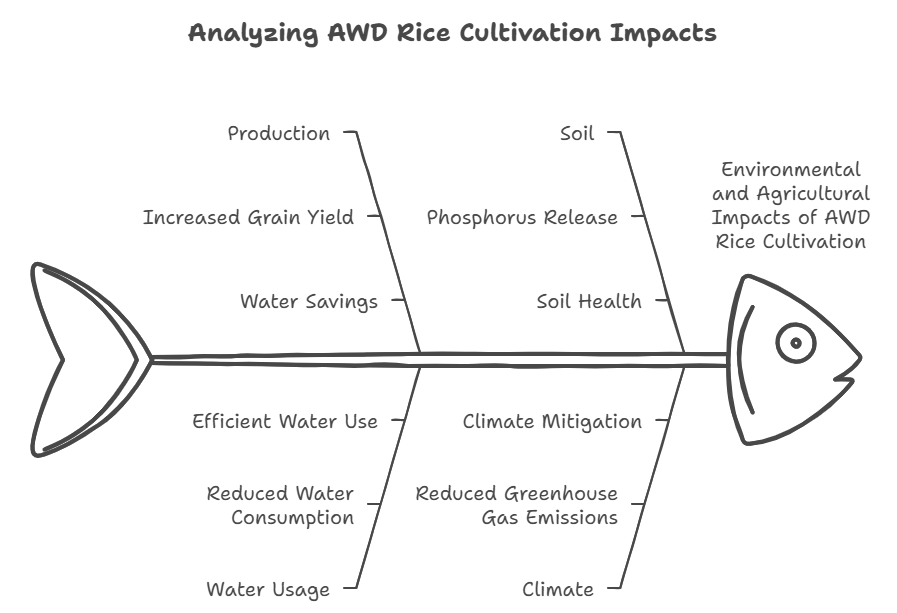
Alternate Wetting and Drying (AWD) is a water management practice in rice cultivation that significantly reduces methane emissions—a potent greenhouse gas—by periodically drying the rice field instead of keeping it continuously flooded. This innovative approach not only conserves water but also decreases methane emissions by up to 30-70%, making rice farming more sustainable and climate-friendly.
When farmers adopt AWD, they can generate carbon credits due to the measurable reduction in greenhouse gas emissions. Carbon credits are tradable certificates representing one ton of carbon dioxide (or its equivalent) avoided or removed from the atmosphere. By implementing AWD, farmers and agribusinesses can earn these credits, which can be sold on carbon markets to companies looking to offset their emissions. This creates an additional revenue stream for farmers while encouraging sustainable practices, fostering climate resilience, and contributing to global emission reduction goals.
By adhering to established standards, AWD carbon credits gain credibility in carbon markets. Companies and buyers can trust that the credits represent genuine reductions in greenhouse gas emissions, making them more attractive for purchase and trading. Well-recognized standards such as the Verified Carbon Standard (VCS) or the Gold Standard provide global recognition and marketability.
Digital Monitoring, Reporting, and Verification (MRV) solutions are increasingly being adopted to address the challenges of Alternate Wetting and Drying (AWD) rice cultivation. These solutions leverage advanced technologies such as sensors, satellite imagery, data analytics, and blockchain to provide accurate, real-time data, improving the overall management of AWD practices and overcoming key barriers faced by farmers
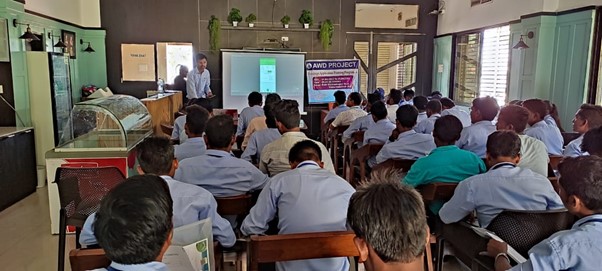
VNV, a leader in sustainability and carbon management, partnered with TraceX to transform its farming operations. By leveraging TraceX’s Digital MRV (Monitoring, Reporting, and Verification) Platform, VNV was able to accurately track and monitor sustainable practices throughout their rice cultivation process. The platform enabled precise data collection, ensuring transparency and reliability in their sustainability efforts. Additionally, it facilitated carbon-reducing activities, helping VNV to meet environmental targets while promoting eco-friendly practices. This collaboration highlights the power of digital solutions in enhancing agricultural sustainability, improving efficiency, and supporting carbon management initiatives.
The TraceX Digital MRV (DMRV) platform is a cutting-edge solution designed to simplify and automate the monitoring, reporting, and verification (MRV) process for sustainability and carbon management projects
In the context of agriculture and carbon credits, the TraceX DMRV platform helps farmers and businesses track and manage key environmental metrics such as water usage, methane emissions, and soil health, particularly for practices like AWD (Alternate Wetting and Drying) rice cultivation. It ensures that data is reliable, traceable, and tamper-proof, making it easier to comply with sustainability regulations and participate in carbon credit markets.
The platform streamlines data collection, improves decision-making, and reduces the cost and complexity of verification processes, empowering businesses to enhance their sustainability efforts while also contributing to climate action goals.
In conclusion, Alternate Wetting and Drying (AWD) rice cultivation is a transformative practice that not only conserves water but also mitigates greenhouse gas emissions, contributing significantly to climate resilience in agriculture. By optimizing irrigation schedules and promoting sustainable water use, AWD helps farmers adapt to changing climatic conditions, reduce water usage, and enhance crop yields. System of Rice Intensification (SRI) and Alternate Wetting and Drying (AWD) are both innovative practices aimed at improving rice cultivation sustainability, and when combined, they offer a powerful approach to water conservation, improved yields, and enhanced climate resilience.
As the world faces increasing environmental challenges, AWD offers a viable solution for creating more sustainable and climate-resilient farming systems. With the integration of digital solutions and data-driven insights, AWD practices can be more easily adopted and scaled, empowering farmers to lead the charge toward a more sustainable agricultural future.
AWD rice cultivation conserves water, reduces methane emissions, and improves soil health, making it a sustainable farming practice that enhances climate resilience by helping farmers adapt to water scarcity and changing weather patterns.
By alternating wet and dry cycles, AWD minimizes the conditions that promote methane production in rice paddies. This practice significantly reduces methane emissions, contributing to lower greenhouse gas emissions from rice cultivation.
Yes, AWD rice cultivation optimizes water use by allowing fields to dry intermittently, reducing the overall water requirements for rice cultivation. This approach is especially beneficial in regions facing water scarcity or drought conditions.